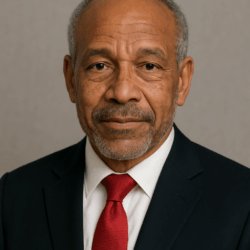Rural Health Gets a Rare Windfall, But Will $50 Billion Change the Math?
![Image: [image credit]](/wp-content/themes/yootheme/cache/13/rural-health-13cf65d4.jpeg)

The Centers for Medicare & Medicaid Services (CMS) has unveiled the Rural Health Transformation Program, a $50 billion initiative that promises to remake the delivery landscape across rural America. Framed as a historic pivot and backed by the Working Families Tax Cuts Act, the program invites all 50 states to apply for a one-time infusion of funds designed to rebuild infrastructure, reimagine care delivery, and reverse generations of underinvestment.
It is, by all measures, the most ambitious rural health investment in federal history. But for those managing rural systems today, grappling with closures, clinician shortages, and fragile payment models, the central question is not whether this money is needed. It is whether it will be enough to change the structural trajectory.
A Program Built for Flexibility. And Pressure
The Rural Health Transformation Program establishes five strategic goals: expanding access, building sustainability, strengthening the workforce, promoting care innovation, and accelerating technology adoption. States have until November 5, 2025, to submit a single application for funding, with half of the funds divided equally among applicants and the remaining half awarded based on impact metrics.
Critically, the program gives states broad discretion to shape proposals according to local needs. This reflects a departure from more prescriptive grant programs and positions state agencies as architects of rural health strategy, placing both opportunity and accountability at the state level.
However, flexibility does not guarantee execution. As the National Rural Health Association has repeatedly emphasized, many states lack the infrastructure, staffing, and policy alignment necessary to rapidly deploy transformation-scale initiatives. Without aggressive technical assistance and strategic guidance from CMS, the funding may generate pockets of progress without systemic cohesion.
Closing Gaps in an Era of Rural Retrenchment
Rural health disparities are well documented. Rural residents face higher rates of chronic disease, lower life expectancy, and limited access to specialty care. More than 180 rural hospitals have closed since 2005, and KFF reports that 60 million Americans live in federally designated Health Professional Shortage Areas, the vast majority of which are rural.
The new program’s emphasis on workforce development and sustainability is a tacit acknowledgment that capital alone will not stabilize rural systems. CMS aims to help states recruit and retain providers, redesign payment models, and implement care delivery approaches that reduce the fragility of small, isolated facilities.
Still, the magnitude of these challenges may outstrip even this funding. A 2023 GAO report on rural hospital closures found that many facilities had negative operating margins for over five years prior to closure. Technology upgrades, staffing incentives, or care model redesigns are unlikely to offset core financial instability unless reimbursement policies are also revisited.
Strategic Tension Between Innovation and Practicality
While the program invites bold proposals, there is a practical tension between CMS’s stated goals and rural systems’ readiness to pursue innovation at scale. For example, one of the five funding pillars calls for tech adoption and data modernization. Yet many rural providers still struggle with basic broadband access, limited EHR interoperability, and insufficient cybersecurity infrastructure.
Programs aimed at integrating telehealth, remote monitoring, or AI-driven care coordination may sound forward-facing but could falter without foundational infrastructure. Similarly, while the emphasis on “innovative care models” is timely, it presumes administrative and operational capacity that is often thin in rural markets.
To navigate this gap, successful applicants will likely need to partner aggressively, with universities, regional health systems, and digital health vendors, to fill expertise and technology gaps. But these partnerships must be structured with clear governance and equity principles to prevent urban-centric entities from dominating rural-led efforts.
Risk, Timing, and the Real Work Ahead
The single-application, single-award format raises both urgency and risk. States must not only submit proposals by November 5, 2025, but also build multi-year implementation and oversight plans with measurable milestones. CMS has committed to strong program oversight, which likely includes performance-based disbursements and public transparency requirements.
This structure incentivizes strategic ambition but penalizes poor execution. States that overpromise or underdeliver risk both reputational damage and a missed once-in-a-generation opportunity to reset their rural health landscape.
Further complicating the stakes is the political volatility surrounding rural investment. While the current administration frames the program as a fulfillment of long-standing promises to underserved communities, a shift in leadership could reframe or undercut the program’s momentum. Long-term stability of funding and policy alignment remains uncertain.
A Cautious Welcome. And a Call for Systemic Alignment
The announcement of the Rural Health Transformation Program is a rare moment of scale-matched ambition in rural health. Yet history has shown that infusion alone does not guarantee transformation. Without complementary reforms in payment policy, workforce regulation, and digital infrastructure investment, even $50 billion could yield only incremental gains.
CMS and state applicants alike must move beyond narrative toward execution, aligning with proven models, engaging community leaders, and embedding sustainability from the outset. For rural health systems facing demographic headwinds and persistent financial strain, the margin for error is slim.